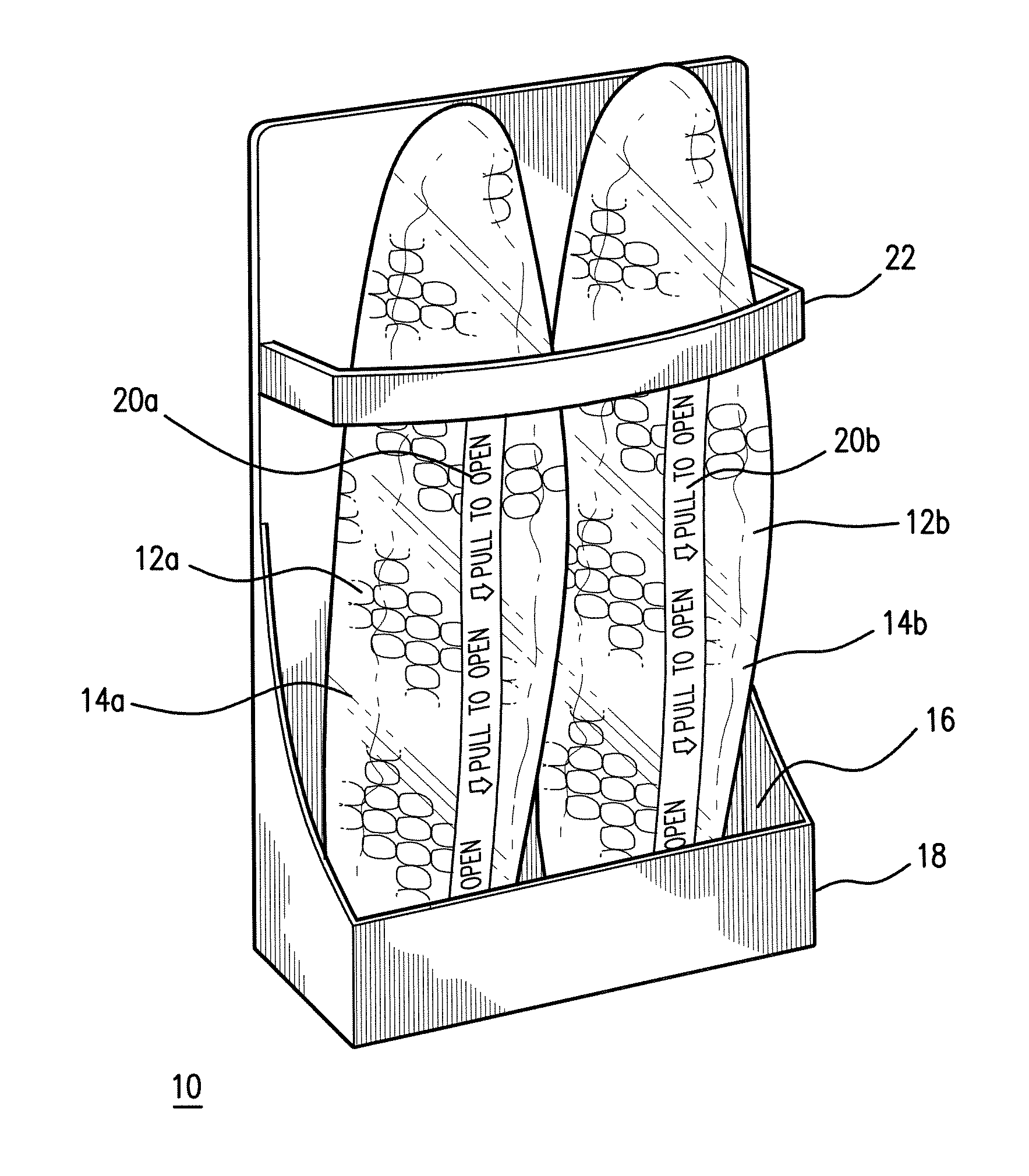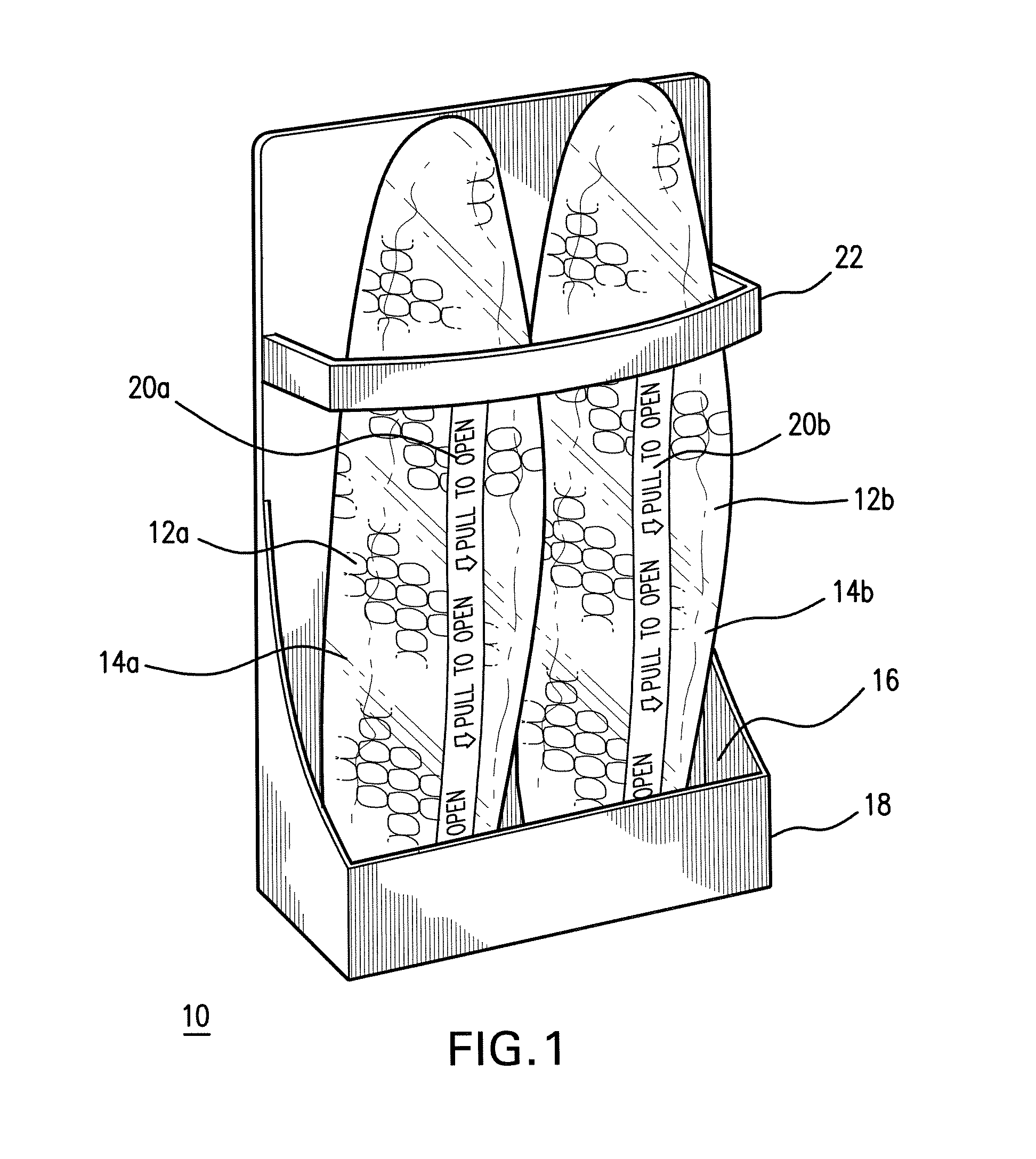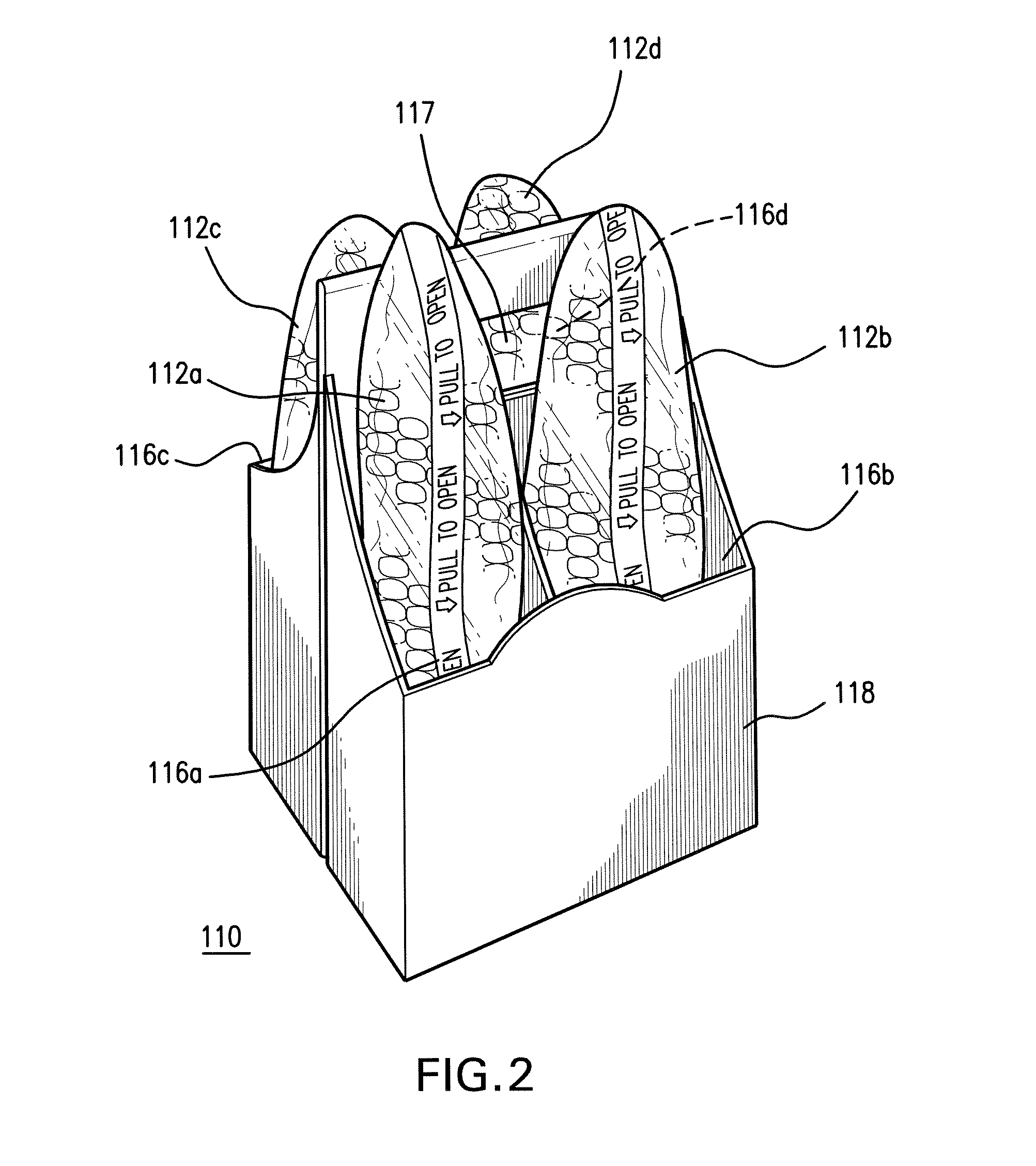Packaged-corn-on-the-cob
a technology of corn and corn kernels, applied in the field of can solve the problems of high physical damage, loss of juiciness through evaporation, bruised fresh corn on the cob, etc., and achieve the effects of reducing sugar and moisture loss, preventing physical damage to the kernels, and easy viewing of the quality of individual kernels
- Summary
- Abstract
- Description
- Claims
- Application Information
AI Technical Summary
Benefits of technology
Problems solved by technology
Method used
Image
Examples
Embodiment Construction
[0026]The invention provides packaged corn-on-the-cob, shipping containers for shipping corn-on-the-cob, methods for dividing containers into compartments for shipping corn-on-the-cob, methods for packaging corn-on-the-cob, methods for cooking corn-on-the-cob, and methods for shipping corn-on-the-cob. The below described preferred embodiments illustrate adaptations of the foregoing. Nonetheless, from the description of these embodiments, other aspects of the invention can be made and / or practiced based on the description provided below.
[0027]Referring now to FIGS. 1-6, four embodiments of packaged corn-on-the cob are shown. Those embodiments shown in FIGS. 1 and 2 are primarily designed for sale in a retail setting such as a grocery store or produce market where a consumer would want to buy between about 2-12 ears of corn. The embodiment shown in FIG. 3 is intended for sale in a convenience store setting where a consumer would want to purchase a single ear of corn and have it cooked...
PUM
| Property | Measurement | Unit |
|---|---|---|
| transparent | aaaaa | aaaaa |
| length | aaaaa | aaaaa |
| width | aaaaa | aaaaa |
Abstract
Description
Claims
Application Information
 Login to View More
Login to View More - R&D
- Intellectual Property
- Life Sciences
- Materials
- Tech Scout
- Unparalleled Data Quality
- Higher Quality Content
- 60% Fewer Hallucinations
Browse by: Latest US Patents, China's latest patents, Technical Efficacy Thesaurus, Application Domain, Technology Topic, Popular Technical Reports.
© 2025 PatSnap. All rights reserved.Legal|Privacy policy|Modern Slavery Act Transparency Statement|Sitemap|About US| Contact US: help@patsnap.com



